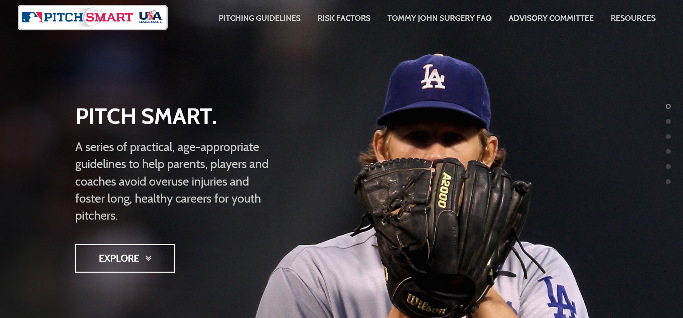
The MLB and USA baseball recently launched Pitch Smart, a comprehensive resource for safe pitching practices that features a series of practical, age-appropriate guidelines to help parents, players and coaches avoid overuse injuries and foster longer, healthier careers for youth pitchers. The education program, offered online at pitchsmart.org, is intended to teach parents and coaches about injury risks to baseball players, particularly with youth pitchers.
The initiative is a result of the growing number of elbow injuries to pitchers at all levels of baseball, particularly in Major League Baseball. It was originally ordered from former Commissioner Bud Selig.
"You start to appreciate how comprehensive their concerns are," Arizona Diamondbacks Chief Baseball Officer Tony LaRussa told MLB Network, speaking of Major League Baseball and USA Baseball. "You recognize that at the professional level, the incident of injuries and surgeries is up. We're now realizing that part of the reason is that young kids are making mistakes that affect their health and their future."
"The more information that's available, for coaches and for parents, the healthier kids will be," LaRussa added.
"The number one thing we recommend as far as prevention is try to prevent fatigue," said Dr. James Andrews. "We also recommend playing in one league at a time, and not playing year-round baseball."
In addition to resources that include in-depth studies and guidelines, Pitch Smart also offers simpler, more to-the-point videos from baseball notables. On the topic of curveballs, for example, Dr. Andrews simply states, "don't throw [one] until you shave."
The program implores youth leagues to develop workload limits for pitchers to limit the likelihood of pitching with fatigue, citing that its research has shown that pitch counts are the most accurate and effective means of doing so.
Pitch Smart also includes figures developed from decades of research. For example, the most recent nationwide study of youth pitchers found that they were still exhibiting the following behaviors:
- Pitched in a league without pitch counts or limits – 45%
- Pitched on consecutive days – 43.5%
- Pitched on multiple teams with overlapping seasons – 30.4%
- Pitched in multiple games on the same day – 19%
- Pitched competitive baseball for more than 8 months per year – 13.2%
Pitch Smart’s objectives include providing information about risk factors to arm injuries, answering frequently asked questions and disseminating information about surgery options, ideal recovery times, and more. Ultimately, the goal of Pitch Smart is to limit injuries across baseball, but its guidelines can also potentially protect coaches against overzealous parents and help parents control aggressive coaches (or vice versa, of course).
“Pitch Smart brings together some of the brightest people in our game, all of whom share one goal: informing our coaches, parents and players about the facts so that they can make educated decisions about how to approach pitching," said Cleveland Indians manager Terry Francona. "The knowledge we have in the game today is an asset, and we are fortunate that Pitch Smart will allow us to apply that knowledge to the futures of pitchers at every level of our sport.”
The program was launched at the General Managers Meetings in Arizona, thanks to an elite medical team that Dr. Gary Green- medical director for Major League Baseball- put together. The group includes Dr. Andrews, head team physicians and trainers from around Major League Baseball, and other experts.
"For the first time, our industry is going to make recommendations on all the various issues associated with elbow injuries,” said MLB executive vice president of baseball operations Joe Torre. “We feel very comfortable and confident that Pitch Smart will lead us in the right direction."
For more information, visit
pitchsmart.org